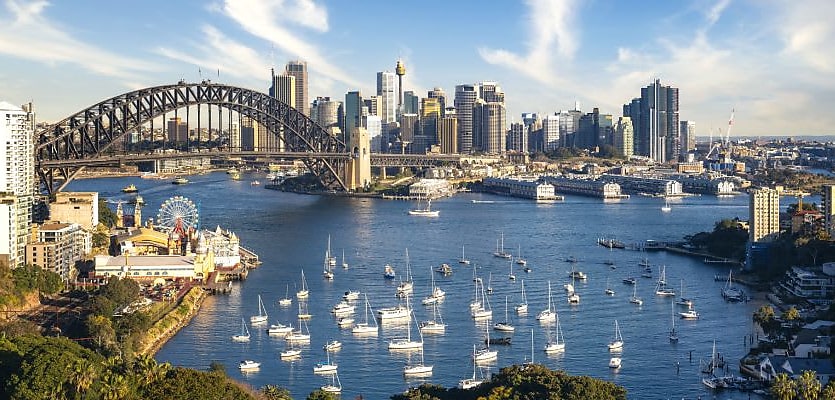After a wild 18 months of growth from the onset of the pandemic, Sydney’s 2022 was characterised by rising interest rates and plummeting housing prices.
According to CoreLogic’s Home Value Index (HVI), house prices in the NSW capital continued the momentum of the previous year and a half, rising by 0.6 per cent in the first month of the year and culminating in the median house price resting just below $1.39 million.
February, however, would dish up a different story for Australia’s most populated city, marking the first month Sydney’s house prices recorded a decline — albeit of just 0.1 per cent — since September 2020 leading median dwelling values to $1.12 million.
April brought with it the first Reserve Bank of Australia (RBA) cash rate increase of the year as inflation hit 5.1 per cent, lifting it from the record low of 0.1 to 0.35 per cent. One month later, CoreLogic’s May HVI revealed Sydney’s dwelling values had fallen 1.5 per cent since their January peak, led by a 1 per cent price decrease during May as part of what PropTrack described as the swiftest value declines in 33 years.
CoreLogic research director Tim Lawless explained at the time that cash rate increases were “only one factor causing growth in house prices to slow or reverse”, adding that “we are also seeing inflation and a higher cost of debt flowing through to less housing demand”.
The research firm’s most recent November HVI found prices in the capital city fell 1.3 per cent throughout the month as part of seven consecutive months of decline Australia-wide, dropping median dwelling prices in Sydney to $1,025,648.
Median unit values in the harbour city, which sat at $830,534 during April, are currently $781,663 as a result of an 8.3 per cent annual value decrease.
From a rental perspective, Sydney has followed the rest of Australia into a rental crisis. CoreLogic’s Quarterly Rental Review for 2022 Q3 revealed vacancy rates hit record lows during the three months to September, leading to 1.3 per cent of properties in the NSW capital being available for rent.
Furthermore, rents across the harbour city rose 0.7 per cent in September, taking them to $665 per week, only behind Canberra’s $682. According to further research from CoreLogic, Sydney trailed only Melbourne for annual unit rent increases (13.4 per cent).
A primary factor pushing Sydney vacancy rates from the 2.5 per cent they began in the year to current levels, forcing rents in the opposite direction, has been stalled supply of housing.
A PropTrack report published at the beginning of November found housing supply at its lowest point since 2003, with the number of properties listed for rent declining 20.5 per cent in the past 12 months.
Much remains to be seen around the future of house and unit prices in Sydney as the year draws out and 2023 begins; however, much will be dependent on the RBA’s cash rate trajectory.









You are not authorised to post comments.
Comments will undergo moderation before they get published.